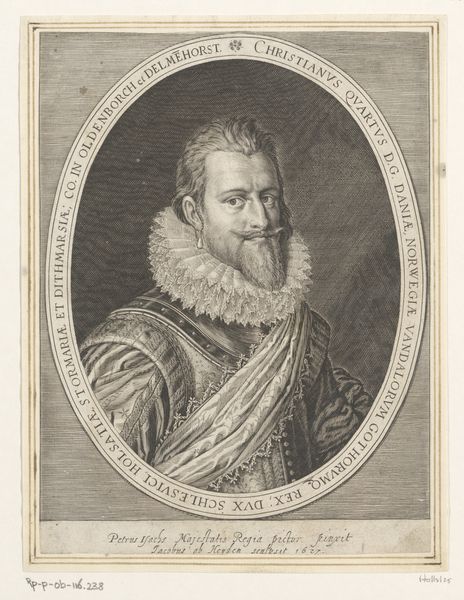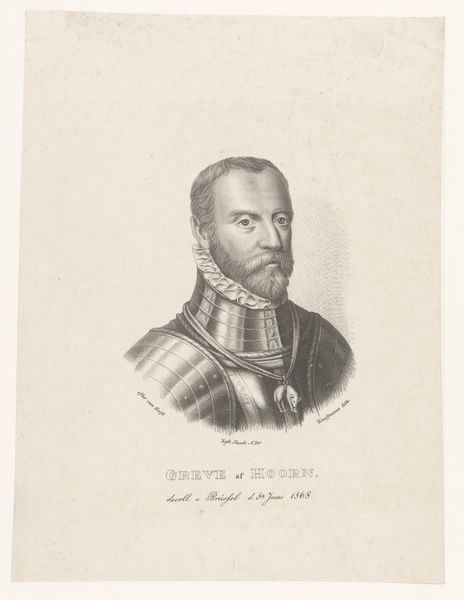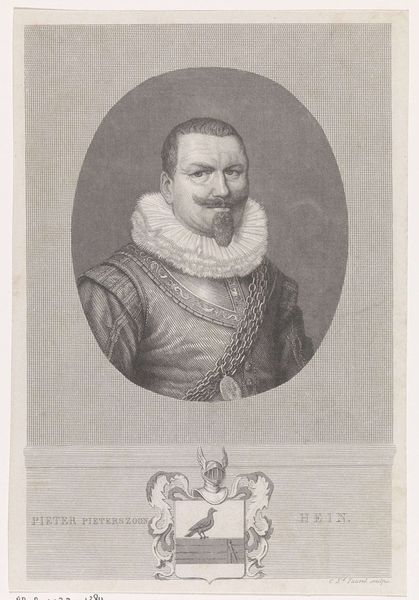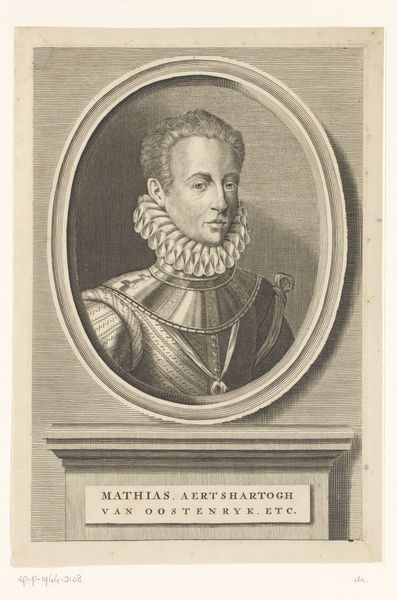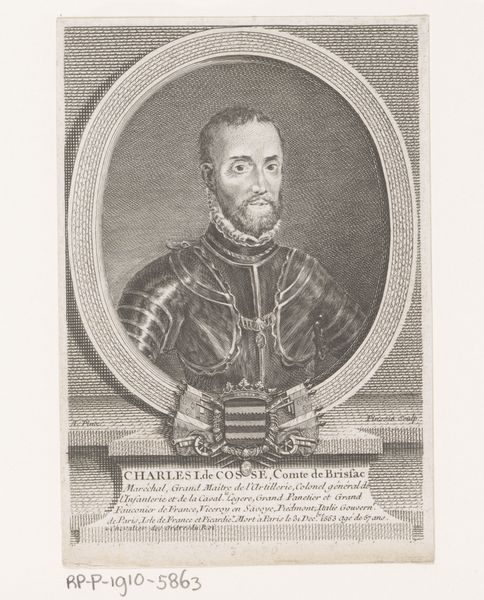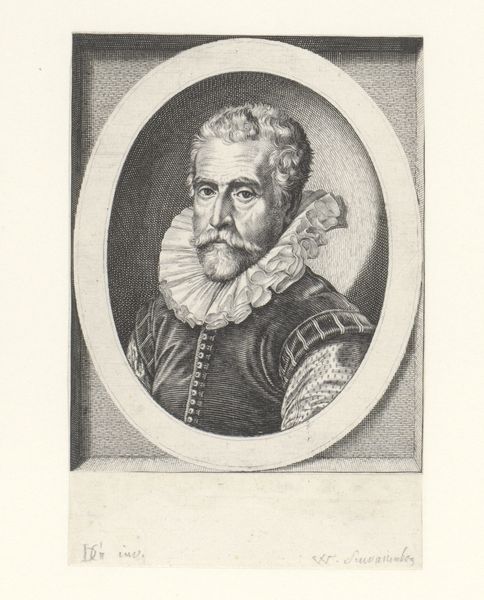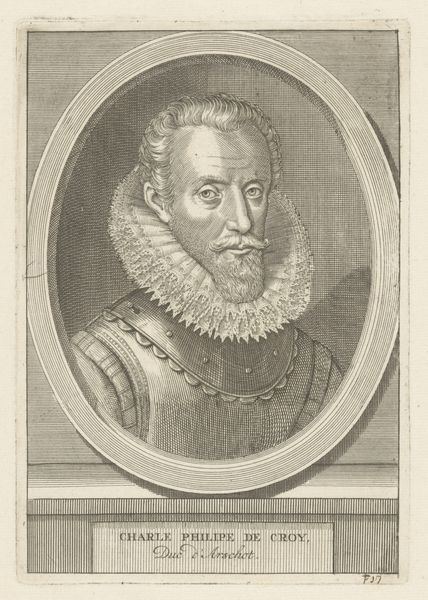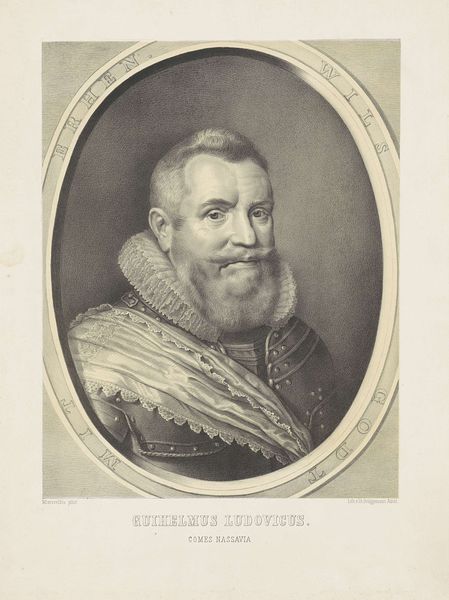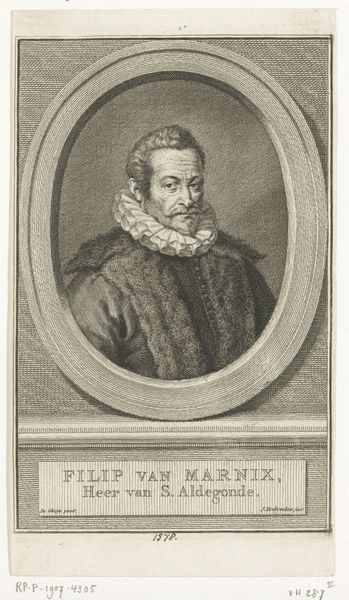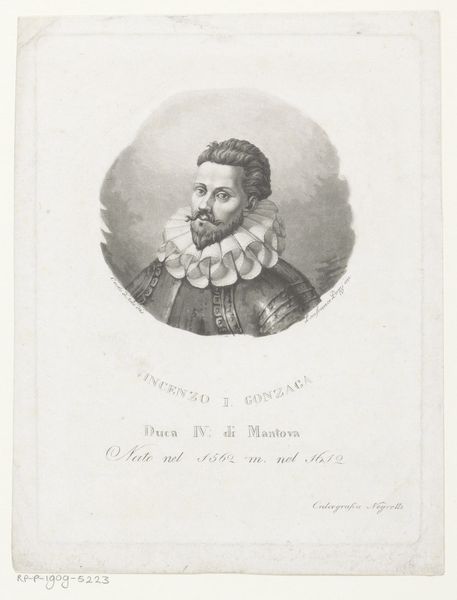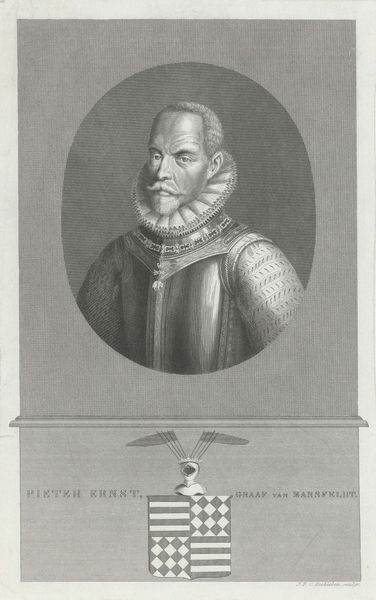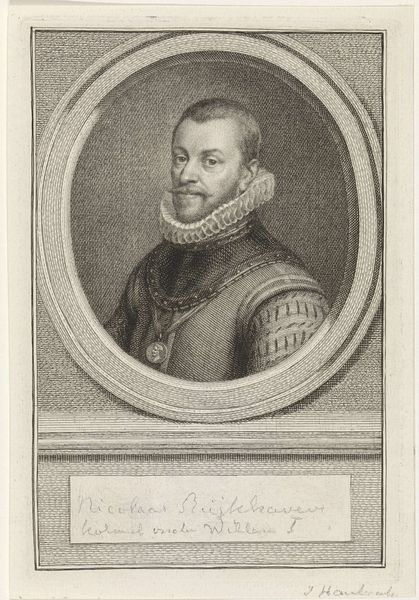
Dimensions: height 187 mm, width 110 mm
Copyright: Rijks Museum: Open Domain
Editor: So, this engraving is entitled "Portret van Alessandro Farnese," placing it somewhere between 1780 and 1833. The artist is J\u00e1nos Blaschke, and it looks like the work is primarily intaglio on metal. The detail is stunning, but it feels almost… austere, in its formality. What do you see in this portrait? Curator: Well, looking at this image through a historical lens, the austerity you perceive isn’t just aesthetic. It speaks volumes about the function of portraiture during this period. Think about who Alessandro Farnese was: a significant military figure, a Duke. Portraits like this weren't just about likeness; they were carefully constructed images, meant to project power and legitimacy. How do you think the baroque style plays into this? Editor: It adds to the grandeur, definitely! The elaborate ruff, the armor... It's all designed to impress. But the print itself feels almost mass-produced in its dissemination. It's history made… consumable? Curator: Exactly! Engravings like these played a critical role in disseminating images of power and constructing historical narratives. This wasn’t a unique, precious painting for a royal collection. It was reproducible. How does the accessibility of the image affect its impact and message, especially when compared to earlier, more exclusive portraits of the aristocracy? Editor: That’s a great question. It democratizes the image, in a way. Even if the subject remains aloof, the portrayal is now viewable by a larger population. It makes you wonder about its intended purpose: was it for propaganda, historical record, or perhaps something in between? I suppose, the Baroque aesthetic reinforces the authority intended. Curator: Indeed. It reflects a shift in the public role of art. These images participated in the social construction of reputation and collective memory. So much can be learned through historical visual culture. Editor: I hadn’t really considered the intersection of power, accessibility, and artistic style. Thanks for sharing your insight!
Comments
No comments
Be the first to comment and join the conversation on the ultimate creative platform.
